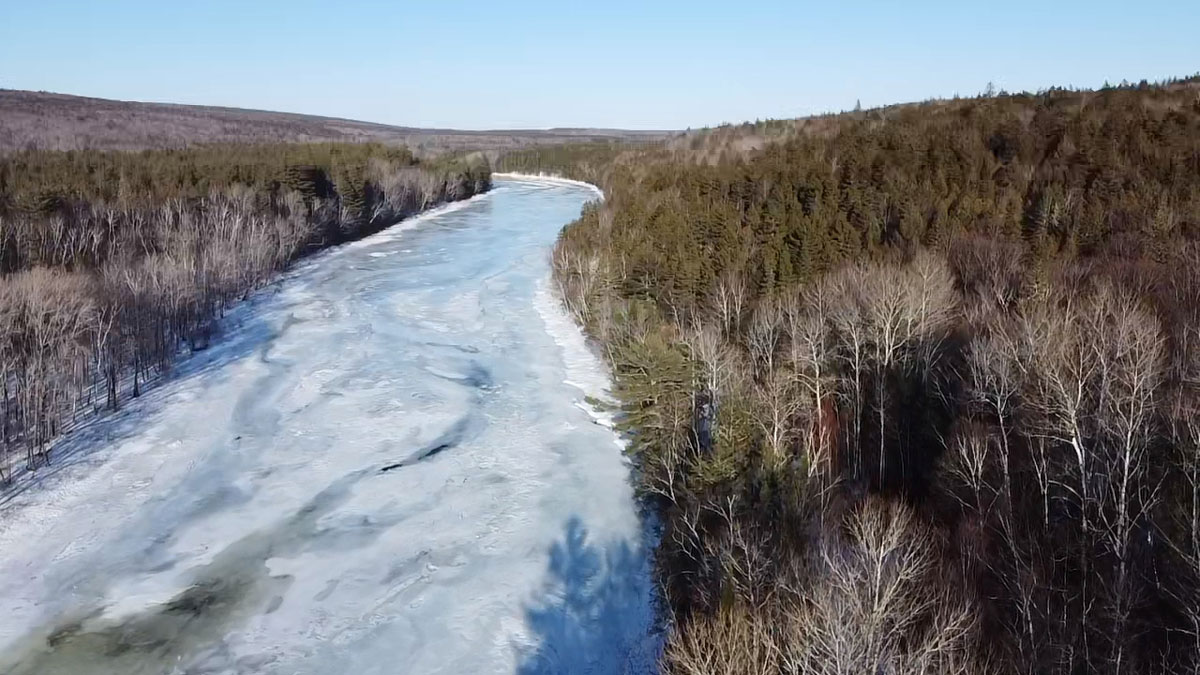Source: Journal of Geophysical Research: Biogeosciences
River ice cover not only affects rivers during the winter but can also influence both physical and biological processes throughout the year, including the timing and duration of ecological productivity, under-ice light availability, and the mixing and distribution of nutrients. Although many rivers around the world experience a crusting of ice during winter months, the duration of ice cover is shrinking. Researchers have been documenting the later freezing and earlier melting of river ice, but few studies have delved into what changing ice conditions might mean for river ecology, especially in smaller river systems and for ecosystem processes like nutrient cycling and productivity.
Now in a new study, Thellman, Jankowski, and colleagues look at how ice cover and duration affect ecosystems. They found the formation and duration of river ice cover depended on the interaction of climate, river characteristics (including flow, size, and slope or gradient), and the connectivity of river water to groundwater systems. The breakup of ice is primarily temperature driven, with big swings of temperature leading to mechanical breakup and slow temperature changes leading to gradual melting.
The researchers also noted that earlier river ice breakup appears to be most influential for productivity in small rivers. Earlier river ice breakup can increase productivity in the ecosystem, but more frequent ice breakup events during winter can have a disruptive effect on the streambed ecosystem. They note that future research should focus on river processes during the winter months, especially on ice processes in smaller river systems for which other forms of data like satellite imagery are not available. Specifically, the authors suggest studies that move beyond traditional salmonid-focused winter ecology research to include a wider diversity of organisms and ecosystem processes. (Journal of Geophysical Research: Biogeosciences, https://doi.org/10.1029/2021JG006275, 2021)
—Sarah Derouin, Science Writer

